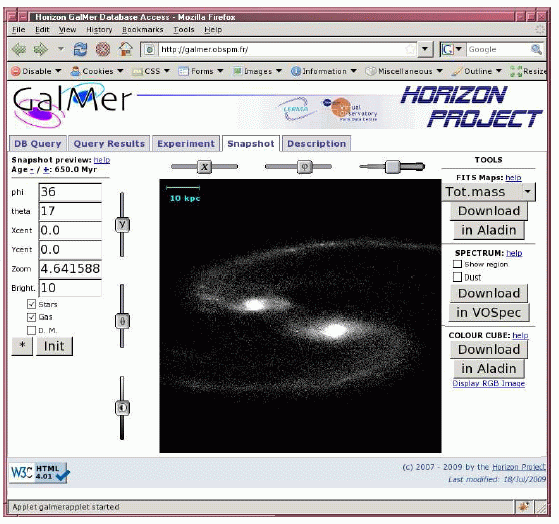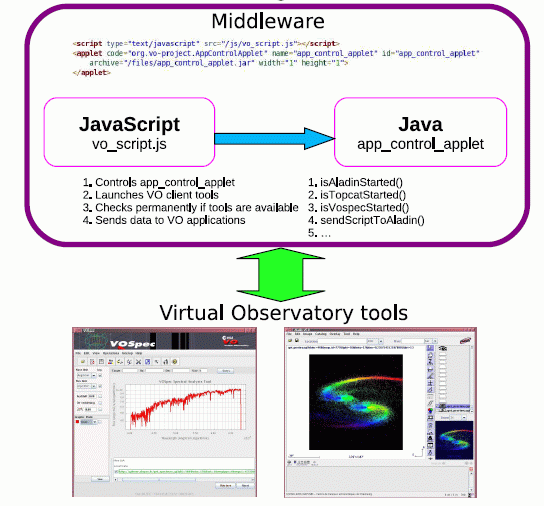To investigate the physics of galaxy formation through hierarchical merging, it is necessary to simulate galaxy interactions varying a large number of parameters : morphological types, mass ratios, orbital configurations, etc. On one side, these simulations have to be run in a cosmological context, able to provide a large number of galaxy pairs. On the other side, the resolution has to be high enough at galaxy scales, to provide realistic physics. The GalMer database is a library of thousands of simulations of galaxy mergers at moderate spatial resolution. It satisfies precisely this compromise between the diversity of initial conditions and the details of underlying physics.
The simulations are as realistic as possible. They include all state of the art physics known : gravitational N-body interactions between all particles (gas clouds, stars and dark matter), gas dissipation and hydrodynamics, formation of stars from the gas according to the observed Schmidt-Kennicutt law, feedback associated to starburst, provided by stellar winds and supernovae explosions, etc..

The results from the simulations can be analysed as for observations, and with even more details. For each selected projection, on-the-fly programs compute the projected image, with colour maps according to the age of the stars along the line of sight. The simulation knows the average birth time of any stellar particle, and computes the corresponding colour from the stellar population synthesis model PEGASE. A dust screen can be applied, corresponding to the gas column density along the line of sight, and according to the metal abundance computed from the stellar yield at each time-step of the simulation. Dust emission is also computed in the infrared, through a very simple and approximate radiative transfer.
All data can be accessed from the database, including all coordinates, velocities and properties of simulated particles in FITS binary tables. The main advantages of the database are VO access interfaces and value-added services which allow users to compare the results of the simulations directly to observations. GalMer can be used as a virtual telescope producing broadband images, 1D spectra, 3D spectral datacubes, and even producing the star formation rate, and history, along the galaxy interactions. Examples of the scientific usage of the database are given in the reference below. They include (1) studies of the star formation efficiency in interactions ; (2) creation of old counter-rotating components ; (3) reshaping metallicity profiles in elliptical galaxies ; (4) orbital to internal angular momentum transfer ; (5) reproducing observed colour bimodality of galaxies.

See the web site http://galmer.obspm.fr. The PI of the GalMer project is Paola Di Matteo. To contact the Galmer team, mail to ’ + part3 +’</’ +’a’ +’>’) ; // -
Contact
Igor Chilingarian (Observatoire de Paris, LERMA, et Observatoire de Strasbourg)
Paola Di Matteo, (Observatoire de Paris, GEPI, et CNRS)
Francoise Combes, (Observatoire de Paris, LERMA, et CNRS)
Anne-Laure Melchior, (Observatoire de Paris, LERMA, et UPMC)
Benoit Semelin, (Observatoire de Paris, LERMA, et UPMC)
